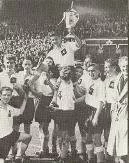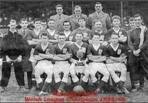
Football Deaths
Football deaths are thankfully few and far between though a player dying on the pitch is not an unknown occurrence.
There have been some recorded instances of players dying from natural causes during a match, with York City striker Dave Longhurst, Benfica’s striker Miklos Feher and Cameroon’s Marc-Vivian Foe all passing away because of heart conditions.
Perhaps the most famous of football deaths not involving natural causes was when Celtic keeper John Thompson was killed in a collision with Rangers forward Sam English at Ibrox in 1931. Thompson died from a fractured skull after his head came into contact with the knee of the Rangers striker.
Followers of Nonleague football will of course be familiar with the events at Birmingham in 1967 during the FA Amateur Cup tie between Highgate United and Enfield. A lightening strike during the match injured a number of players with United centre-half Tony Allden dying from his injuries.
A similar, but less well-known event, occurred in April1948 when the Army Cup Final ended in tragedy.
The Royal Armoured Corp (Bovington) and 121 Training Regiment Royal Artillery (Oswestry) had three days earlier played out a 0-0 draw with the replay taking place at the Command Central Ground in Aldershot.
The first game had been played out in the presence of the King and Queen but the replay attracted foul weather rather than Royalty.
As the 121st Training Regiment took an early two goal lead storm clouds were gathering with the skies above Aldershot becoming increasingly dark.
Early in the second half the inevitable storm broke but the heavy rain was preceded by a massive rumble of thunder and a huge folk of lightening which struck whilst the players were gathered for a throw-in.
Such was the force of the lightening strike that players, officials and supporters were all knocked off their feet. For over a minute after the strike spectators reported that they were experiencing a tingling sensation in their bodies. The effect on the players out on the pitch was much more severe.
The two players closest to referee Captain Green, Bertram Boardley (121 TR) and Ken Hill (RAC), were both instantly killed whilst another half dozen players and Captain Green were injured with the referee joining two players and a couple of spectators in being taken to hospital.
What had actually happened wasn’t immediately clear though it was later claimed that the lightening had struck the whistle of the referee, Captain Green, who was poised to signal for the throw-in to be taken.
It is believed that the official, a qualified Football League referee, survived the incident because he was wearing rubber football boots in contrast to the players who were all wearing metal studded boots.
The match of course was abandoned with the cup being shared between the teams while the coroners verdict on the two dead footballers was that the cause of death was ‘misadventure, from heart failure due to an electric shock from lightening’.
A thankfully rare event in a chronicle of football deaths. |
|
|
Copyright NonLeague Football History 2008
 Delicious
Delicious  Digg
Digg  Facebook
Facebook  Google Bookmarks
Google Bookmarks  Furl
Furl  Stumbleupon
Stumbleupon  Yahoo My Web
Yahoo My Web



